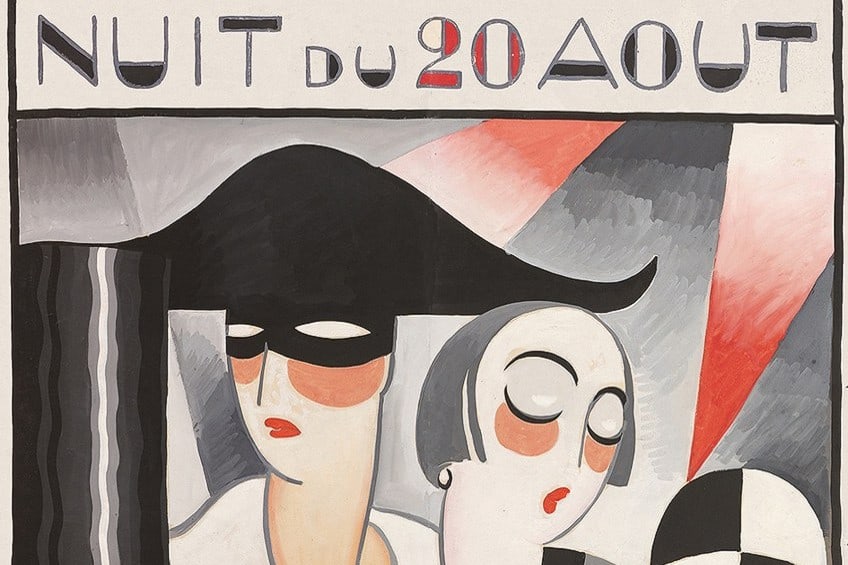Art Deco – An In-Depth Discussion of the Art Deco Period
What is Art Deco design? Based on the Art Deco definition, the Art Deco style is a decorative art and architectural movement that began in the 1920s and became a prominent influence in the United States and Western Europe throughout the 1930s. Although the Art Deco period was full of adherents that frequently referred to the effect of modernist elements such as De Stijl, Cubism, and Futurism, these references were not necessarily direct; it was as if they wanted to take the final product of a few decades of condensing compositions to their most simplified forms and introducing a novel aesthetic that could be appealing but not academically threatening. This article will cover the Art Deco era and the various fields that embraced its aesthetic.
Contents
- 1 What Is Art Deco Design?
- 1.1 History of the Art Deco Style
- 1.1.1 The French Society of Decorative Arts
- 1.1.2 The Famous Exhibition That Helped Launch the Art Deco Period
- 1.1.3 Art Deco Design and Art Nouveau
- 1.1.4 The Art Deco Style and Modernism
- 1.1.5 The Effect of the Great Depression
- 1.1.6 The Art Deco Era in North America
- 1.1.7 Streamline Moderne
- 1.1.8 The Retroactive Naming of Art Deco
- 1.1.9 The Global Spread of the Art Deco Style
- 1.1.10 After Art Deco
- 1.1 History of the Art Deco Style
- 2 Types of Art Deco Design
- 3 Art Deco Accomplishments and Ideas
- 4 Frequently Asked Questions
What Is Art Deco Design?
The Art Deco style was created in Paris, but it has affected culture and architecture around the world in general. Art Deco pieces are geometric, symmetrical, streamlined, generally basic, and visually appealing. This approach contrasts with the avant-garde art of the time, which challenged ordinary audiences to discover significance and value in pictures and shapes that were frequently brazenly anti-traditional.
History of the Art Deco Style
Many eminent French architects, artists, and designers who had contributed significantly to the growth of the Art Nouveau movement towards the end of the 19th century recognized that it was rapidly losing appeal. The Industrial Revolution began a century ago, and by the end of that century, modern life had evolved dramatically from a few decades prior.
The moment had come for something fresh, and Art Deco artworks and Art Deco architecture were there to fill that niche.
The French Society of Decorative Arts
A group of French creative pioneers created The Society of Decorative Artists out of a yearning to accelerate into the next century in pace with modern advancements instead of being impeded by nostalgia. The group included well-known names like Art Nouveau artist and engraver Eugene Grasset and Hector Guimard, the Art Nouveau architect as well as young decorative designers and artists like Francis Jourdain and Pierre Chareau.
The French government encouraged and sponsored this type of creative endeavor.
Among the new group’s main aims was to disrupt the visual arts’ hierarchical system, which condemned ornamental artists to a lower rank than more classical sculptural and painting mediums. “We subsequently determined to restore the decorative arts, immaturely disregarded as a Cinderella or poor relative permitted to dine with the slaves, to the significant, almost predominant role it enjoyed in the past, at all periods and in all of the nations across the globe”, Jourdain is cited as saying.

A big exhibition showcasing a new style of ornamental art was planned for 1914, but it had to be postponed until after World War I ended, and then again for different reasons until 1925. French patriotism also played a role in the revival of decorative arts, as French artists felt threatened by rising shipments of inexpensive German furnishings.
The Famous Exhibition That Helped Launch the Art Deco Period
The name of the Art Deco style originated from the Exposition Internationale des Arts Décoratifs et Industriels Modernes, an influential exhibit that was held in 1925 in Paris and was the inaugural exhibition of the style. The French government attempted to promote the new Art Deco design by hosting the exhibition between the Grand Palace entrance and the golden-domed Les Invalides esplanade on both banks of the Seine River. The exposition included almost 15,000 architects, artists, and designers.
More than 16 million people visited the various displays throughout the exhibition’s seven-month run. This show was the basis for the movement’s creation.
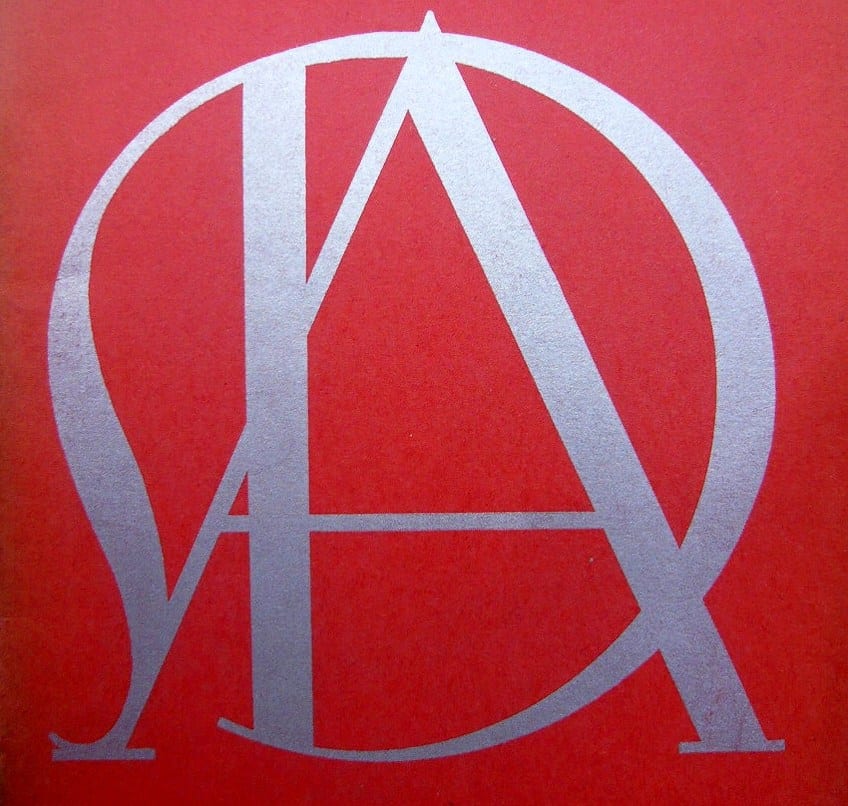
The exhibit’s primary goal was to showcase French makers of luxury furniture, ceramics, glassware, metallurgy, fabrics, and other decorative objects. All of the big Paris department shops and designers had their booths to advertise their items. The exposition was also used to promote items in French possession from Asia and Africa such as exotic woods and ivory. A well-liked attraction during the expo was the Hôtel du Collectionneur, which featured innovative furniture pieces by Emile-Jacques Ruhlmann in addition to Art Deco textiles, rugs, and an Art Deco artwork by Jean Dupas.
The interior design adhered to the same geometric principles and symmetry that distinguished it from Art Nouveau, as well as the use of vibrant colors, exquisite craftsmanship, and pricey, rare materials that distinguished it from the rigid utility of the Modernist style.
While the majority of the exhibits were lavishly adorned and packed with hand-crafted luxury home furnishings, two booths, those of the Pavilion de L’Esprit Nouveau and the Soviet Union, were constructed in a drab aesthetic with plain white wall surfaces and no adornment; they were one of the earliest manifestations of modernist architecture.
Art Deco Design and Art Nouveau
Art Deco was an artistically and intellectually immediate response to Art Nouveau and the larger cultural phenomena of modernity. During WWI, many critics thought that the style’s exquisite intricacy, delicate patterns, frequently expensive materials, and manufacturing processes were inadequate for a demanding, unstable, and more mechanized contemporary world.
The Art Nouveau movement highlighted the qualities of the hand-crafted and drew its elaborate, stylized shapes from nature, whereas the Art Deco artworks and Art Deco architecture emphasized a machine-age streamlined appearance and sleek geometry.
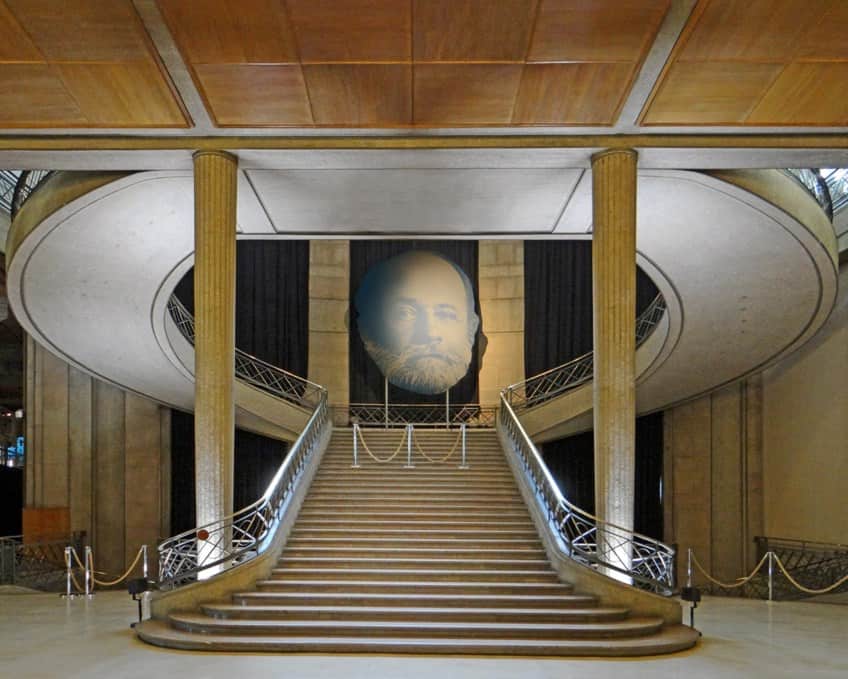
The Art Deco Style and Modernism
The Exposition Internationale featured not only Art Deco artworks, but also instances of avant-garde sculptures and paintings from Constructivism, Cubism, De Stijl, Bauhaus, and Futurism. By the 1920s, the style had created a name for itself as an energetic, but popular, alternative to the more intellectual De Stijl and Bauhaus styles. As an organizational design philosophy, all three placed a focus on clean, powerful lines.
Art Deco practitioners welcomed technical progress, contemporary materials, and automation and strove to accentuate them in the style’s overall look.
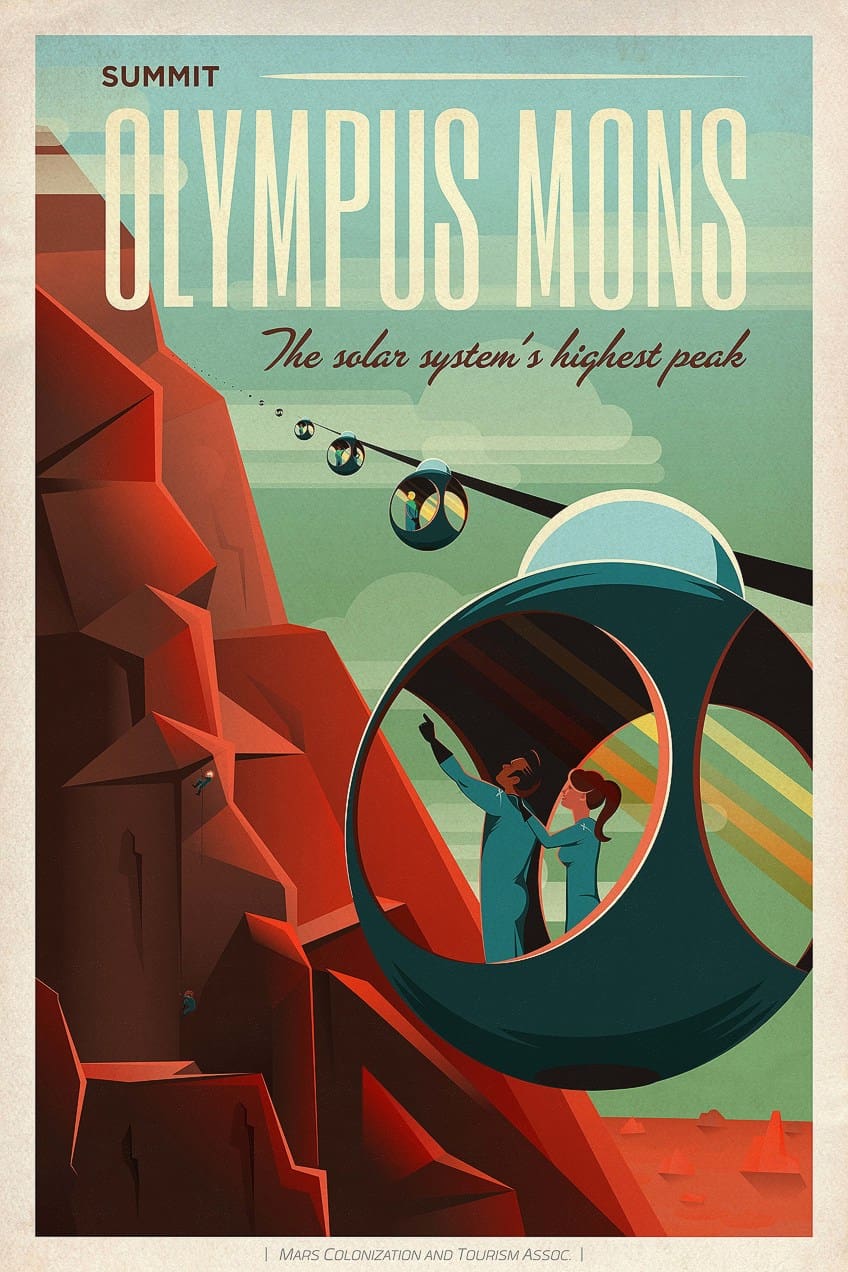
Art Deco had followers who placed values in the same forward-thinking notions of current avant-garde groups. Modernist sculpture and painting took a backseat during the exhibition, save from Le Corbusier’s Esprit Nouveau pavilion and the Soviet pavilion.
The Effect of the Great Depression
The second wave of the Art Deco period began at the same time as the Great Depression. For both economic and theoretical reasons, “austere” may be the essential aesthetic of this second evolution of the Art Deco style. Whereas earlier Art Deco design was vertically oriented, with skyscrapers reaching dizzying heights, subsequent Art Deco structures, with their mainly unadorned exteriors, smooth curves, and horizontal emphasis, represented robustness, calm elegance, and endurance.
During the hardest years of the Great Depression, from 1929 through to 1931, American Art Deco shifted from following to inventing trends.

The Art Deco Era in North America
The acceptance of the Art Deco movement in the United States took a distinct path. The United States Secretary of Commerce at the time, Herbert Hoover, decided that American architects and designers could not display their works at the Exposition Internationale because the nation had yet to develop a uniquely American form of art that was sufficiently “fresh enough”. As a solution, he appointed a committee to visit France to evaluate the Exposition’s contents and then adapt what they found to be a modern American creative and architectural style.
The Metropolitan Museum of Art, the American Institute of Architecture, and The New York Times were among the aesthetic missionaries dispatched by Hoover.
The expedition sparked an almost instantaneous surge in creative originality in the United States. By 1926, a scaled-down version of the French fair had visited Cleveland, New York, Detroit, Chicago, St. Louis, Minneapolis, Boston, and Philadelphia. Art Deco designs were widely displayed at the American World Fairs in New York City and Chicago, while Hollywood welcomed the look and made it fashionable across the nation.

Even American firms like Ford and GM established pavilions at the New York World’s Fair. Skyscrapers and other large-scale structures are among the most well-known representations of American Art Deco architecture. Furthermore, because of its jagged and geometric patterns used on the complex architectural facades, the American version of Art Deco in design concepts has been dubbed Zigzag Modern. Nevertheless, in general, American Art Deco architecture is less ornate than its European counterpart.
The American variant is more pared-down, with clear lines and powerful curves, strong geometric shapes, rich colors, and often ornate adornment.
As major influences such as the International Style and New Objectivity, as well as the severe economic downturns of the late 1920s and into the early 1930s, started to exercise their impact on the Art Deco style, the aesthetic became significantly less opulent. For example, this transition may be represented by the substitution of chrome instead of gold, Bakelite instead for mother of pearl, stone for concrete, and so on. The American Art Deco style arose as a glorification of technological development, particularly mass manufacturing, as well as a renewed belief in social improvement.
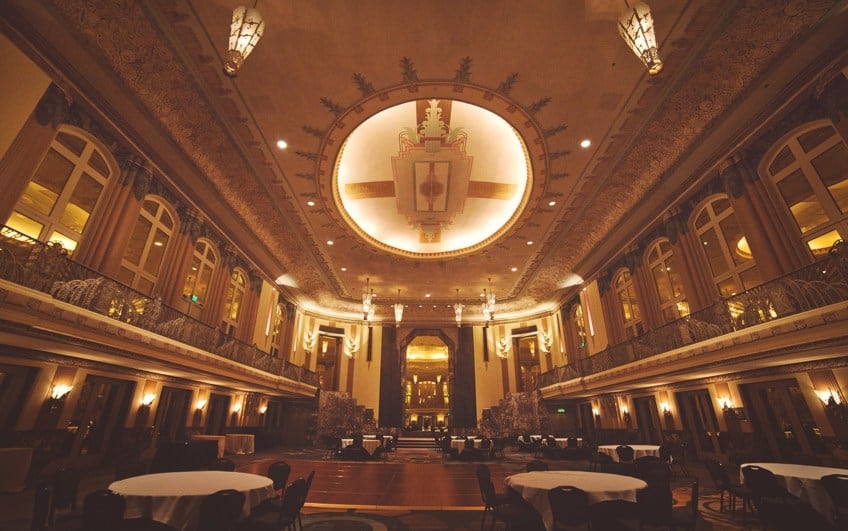
In effect, these accomplishments might be viewed as a source of national pride. Many of the artworks produced during Roosevelt’s Works Progress Administration in the 1930s were Art Deco, ranging from municipal facilities like schools and libraries to huge public murals. The WPA wanted to benefit the community by providing jobs and embedding American ideals through design to revitalize the postwar U.S. economy.
The usage of American Art Deco, therefore, resulted in a design manifestation of democracy.
Some of the materials utilized in Art Deco creations were pricey and hence out of reach for the common man. Nevertheless, the use of inexpensive or innovative materials enabled the production of a diverse variety of affordable objects, bringing beauty into the public realm in a novel way. From magazine covers and bright ads to useful products like clocks, vehicles, furniture, cutlery, and even ocean liners, Art Deco influenced the design and creation of a wide range of objects.
Streamline Moderne
This Americanized offshoot of the European Art Deco trend was known as Streamline Moderne. Aside from severe philosophical and economic influences, the first Streamline Moderne buildings were inspired by structures created by adherents of the German New Objectivity movement which emerged from a casual affiliation of German designers, architects, and artists in the early 20th century.
Architects and artists of New Objectivity were driven by the same type of austere pragmatism that drove Streamline Moderne supporters to reduce excesses, along with the sentimentality of expressionist art.
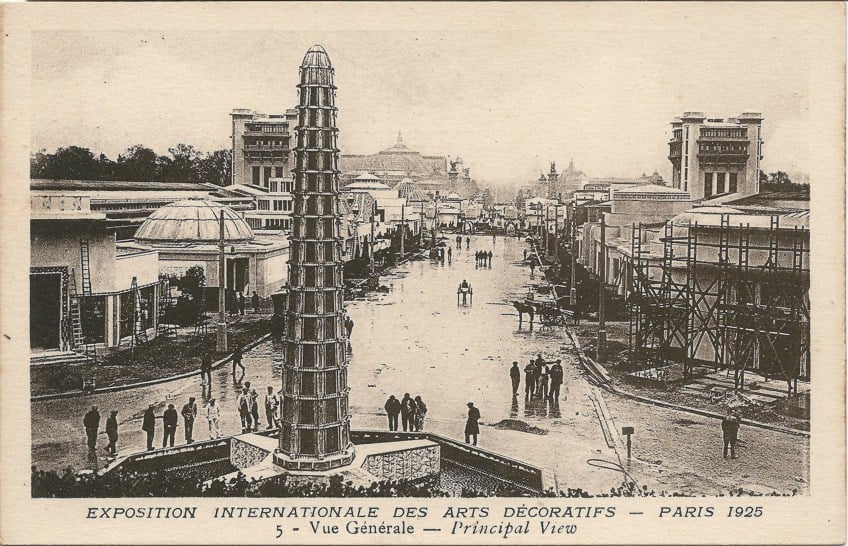
New Objectivity architects focused on creating structures that might be considered practical, reflecting real-life concerns. They preferred that their designs adapt to the real environment rather than forcing people to adapt to an unworkable style. To that purpose, New Objectivity architects pioneered prefabrication technology (which aided in the rapid and efficient housing of Germany’s impoverished).
Streamline Moderne architecture was devoid of adornment, with clean contours, horizontal lines, glass bricks, and cylindrical and occasionally nautical features.
Aerodynamics and other manifestations of contemporary technology were emphasized more than before. In Streamline Moderne, the more costly and frequently exotic elements of Art Deco were substituted with glass, concrete, and chrome fittings. The color was utilized sparingly, with beige, off-white, and earth tones replacing Art Deco’s more vibrant colors. Similar to the typical Art Deco style, the style was originally developed in buildings and later spread to other objects.
The Retroactive Naming of Art Deco
Initially, the term “Art Deco” was employed in a derogatory manner by a well-known critic, Le Corbusier, in essays in which he condemned the style for its adornment, which he considered inappropriate in a contemporary building. While supporters of the style welcomed it as a pared-down, modernist reaction to excessive embellishment, particularly when compared to its predecessor, Art Nouveau, any ornamentation was unnecessary for Le Corbusier.
It was not until the late 1960s, when enthusiasm for the style was revived, that people adopted the name “Art Deco” positively.

The Global Spread of the Art Deco Style
Art Deco became popular in cities as varied as Cuba, Havana, Mumbai, and Jakarta. Havana has an entire district designed in the Art Deco style. The style is strongly included in the London Underground train system. Shanghai’s harbor has around 50 Art Deco buildings, the majority of which were created by the Hungarian Laszlo Hudec.
Cities as far apart as Melbourne and Sydney in Australia have adopted the style as well, from military memorials to hospitals.
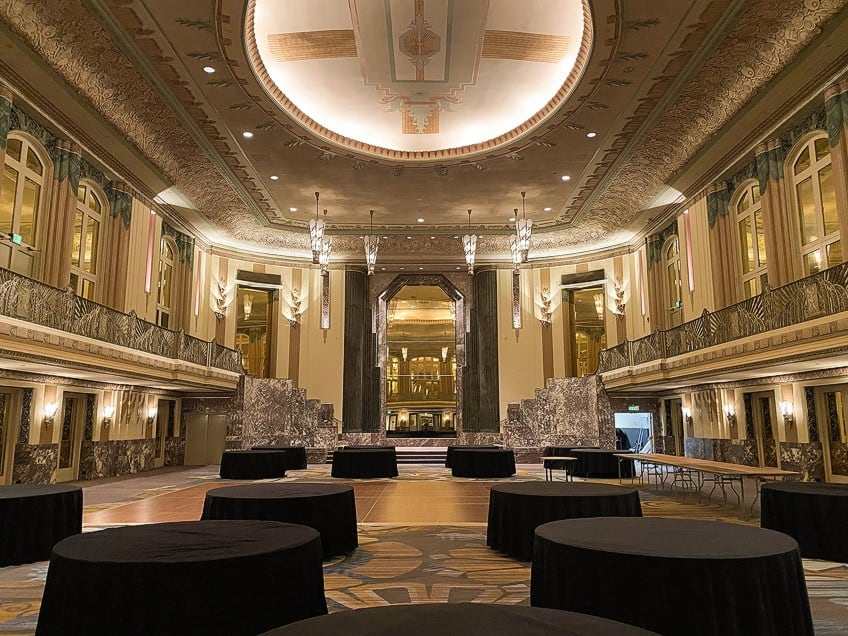
After Art Deco
Art Deco went out of vogue in North America and Europe during the Second World War, with the severity of wartime making the style appear increasingly garish and decadent. Metals were repurposed to be used in the construction of weaponry rather than beautifying structures or interior spaces. Furnishings weren’t seen as prestige symbols anymore.
Further technical advancements enabled cheaper manufacture of basic consumer products, reducing the demand for and appeal of Art Deco designers.
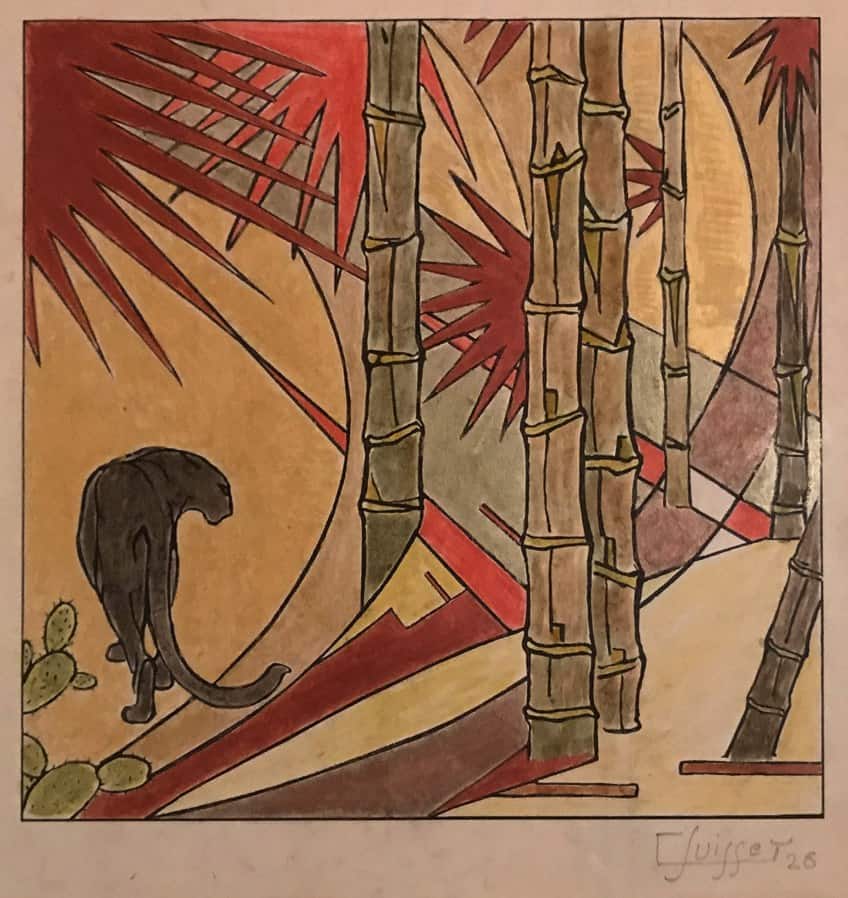
A movement that in many ways aimed to reject the past is now seen as a nostalgic, beloved classic. There has been a consistent, ongoing appreciation of the design since the 1960s. Mid-Century Modern design, which revives the sterile purity of the Bauhaus and continues forth the Art Deco aesthetic’s streamlined style, has elements of Art Deco.
The Memphis Group, an architecture and design movement headquartered in Milan in the 1980s, was also influenced by deco. Memphis’ vibrant, purposefully contemporary designs also took inspiration from Pop art and kitsch.
Types of Art Deco Design
Art Deco designers used contemporary materials such as Bakelite, plastics, and stainless steel, in line with the movement’s emphasis on modern technology. Designers employed more exotic elements like horn, ivory, and zebra skin when a splash of luxury and elegance was required. The Art Deco style, like the Arts and Crafts and Art Nouveau periods, was applied significantly less to the historically highest-ranking artistic forms of expression: sculpture and painting.
Graphic Design
The Art Deco style had an impact on the visual design in a way that reflects the impact of Italian Futurism, with its adoration of velocity and devotion to the machine. Futurist painters employed lines to represent velocity, such as “speed whiskers” that scattered from the rims of fast-moving automobiles and trains. Furthermore, Art Deco practitioners used parallel lines and tapering curves to represent symmetry and efficiency.
Art Deco had an impact on typography, and the types Broadway, Bifur, and Peignot are directly associated with the style.
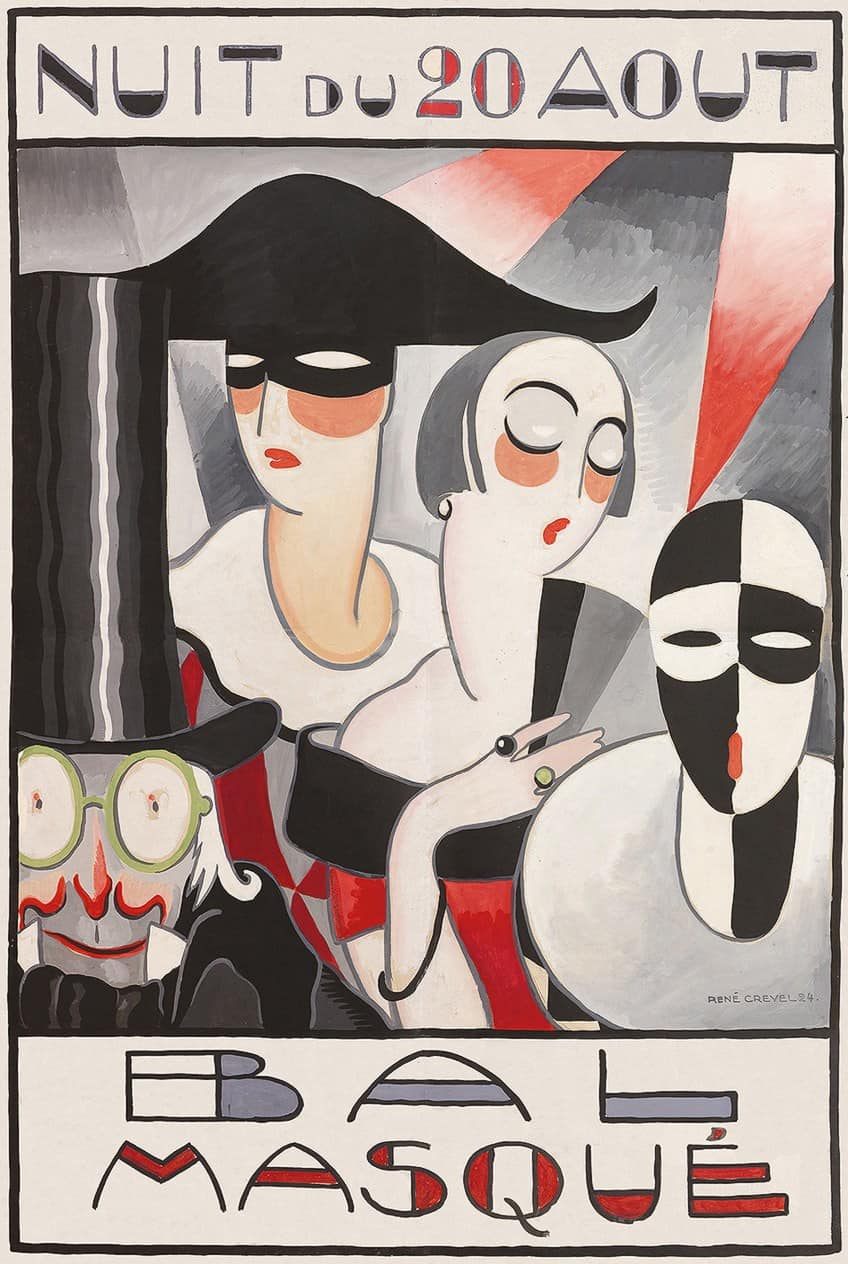
Simple shapes and expansive swaths of solid color are evocative of Japanese woodblock prints, which, after the isolationist Edo era ended in 1868, had been a significant source of inspiration for Western painters, particularly in France. The ensuing inflow of Japanese art into Europe had a profound effect.
Particularly, painters used the Impressionist movement as a starting point for the development of their own totally contemporary styles because of the aesthetic simplicity of woodblock prints.
Art Deco Furniture Design
French Avant-garde furniture design up to the late 1920s was mostly variants of the Art Nouveau style that were more straightforward and less curved. Émile-Jacques Ruhlmann became the preeminent furniture designer as the period went on. He used the exotic materials preferred by Art Nouveau designers, such as ebony, mahogany, ivory, rosewood, and tortoiseshell, while mostly removing decoration from items made in the neoclassical style in the 18th century. Of course, everyone except the wealthiest could hardly afford to purchase one of his works.
Jules Leleu was the French furniture designer who was more clearly associated with the Art Deco movement than Ruhlmann, whose extravagant creations appeared to span both the Art Deco and Art Nouveau movements.
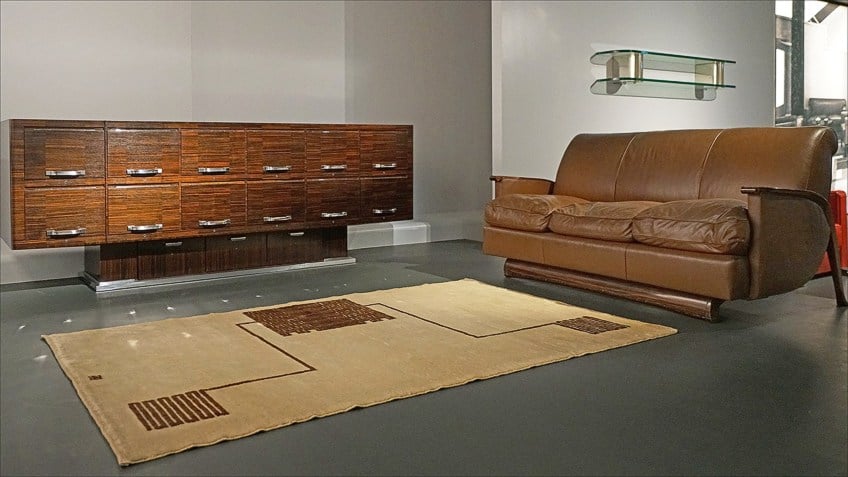
Before the new style replaced Art Nouveau, he worked as a conventional designer and is renowned for designing the great dining room of the Elysee Palace in Paris and the opulent cabins on the first-class deck of the magnificent steamship, the Normandie.
Le Corbusier, in comparison to Ruhlmann and Leleu, was an advocate of a highly restrained, ornament-free variation of the Art Deco style, frequently designing furniture that complemented the spartan interiors of his own architectural creations.
His goal was to create prototypes, especially for chairs, that could be manufactured in bulk and were therefore cost-effective for a larger market. Notable as well is the fact that Donald Deskey’s interior decoration of Radio City Music Hall, a well-known landmark in New York City, is a superb illustration of American Art Deco furniture making that is still in existence today in its original form.
Art Deco Architecture
Hard-edged, often highly decorated patterns are enhanced by shining metal embellishments in Art Deco architecture. Many of these Art Deco buildings have a vertical orientation, built in a way that draws attention upward. To create a streamlined look, rectangular, typically blocky shapes are organized geometrically, with the inclusion of rooftop spires or curving decorative embellishments.
The most renowned American instances include Miami’s pastel-colored Art Deco buildings and New York skyscrapers, while the design was used in a wide range of structures across the world.
In the U.S., the Works Progress Administration aided in the mainstreaming of Art Deco architecture. Surprisingly, the combination of Beaux-Arts classicism and Art Deco evident in many Depression-era public works has been known as Depression Moderne. American skyscrapers were the pinnacle of Art Deco architecture, becoming the world’s tallest and most recognized contemporary structures. They were intended to convey the rank of their builders by their height, form, color, and spectacular illumination at night.
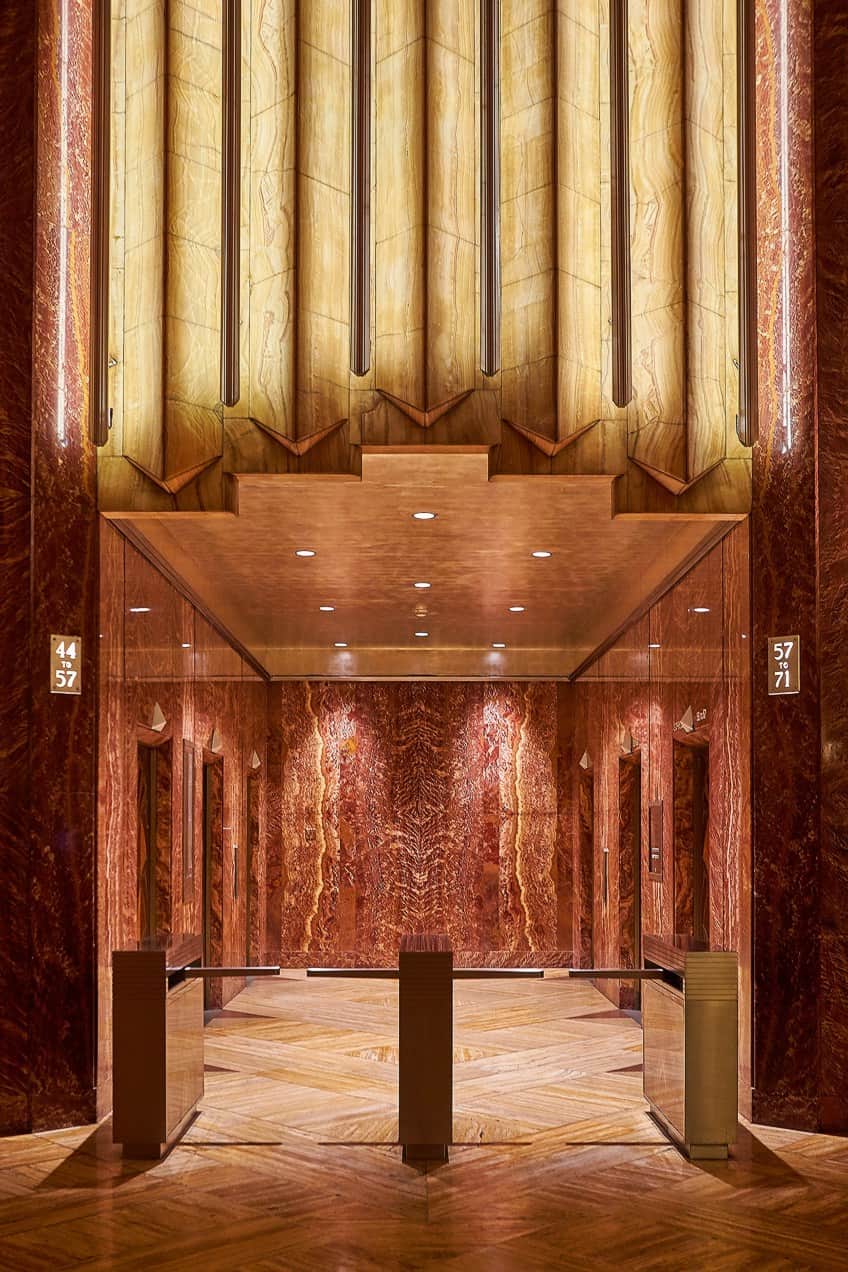
Raymond Hood designed the American Radiator Building, which merged Gothic and Deco contemporary characteristics. The black brick on the building’s exterior (meant to symbolize coal) was used to convey firmness and give the structure a substantial heft. Gold bricks (a representation of fire) covered other portions of the facade, and the entrance was embellished with black mirrors and marble. Detroit’s Guardian Building was another early Art Deco structure. The building, conceived by modernist Wirt C. Rowland, was the first building to make considerable use of colorful patterns in place of traditional ornamentation and stainless steel as a decorative feature.
The Chrysler Building in Manhattan, built by William Van Alen, significantly altered the skyline of New York City. It was a massive 77-story-tall advertising promoting Chrysler vehicles.
A stainless-steel spire crested the top, which was embellished with deco “gargoyles” in the shape of stainless-steel radiator ornaments. The foundation of the skyscraper, 33 stories above street level, was covered with vivid art deco friezes, and the entrance was adorned with contemporary art deco emblems and motifs.
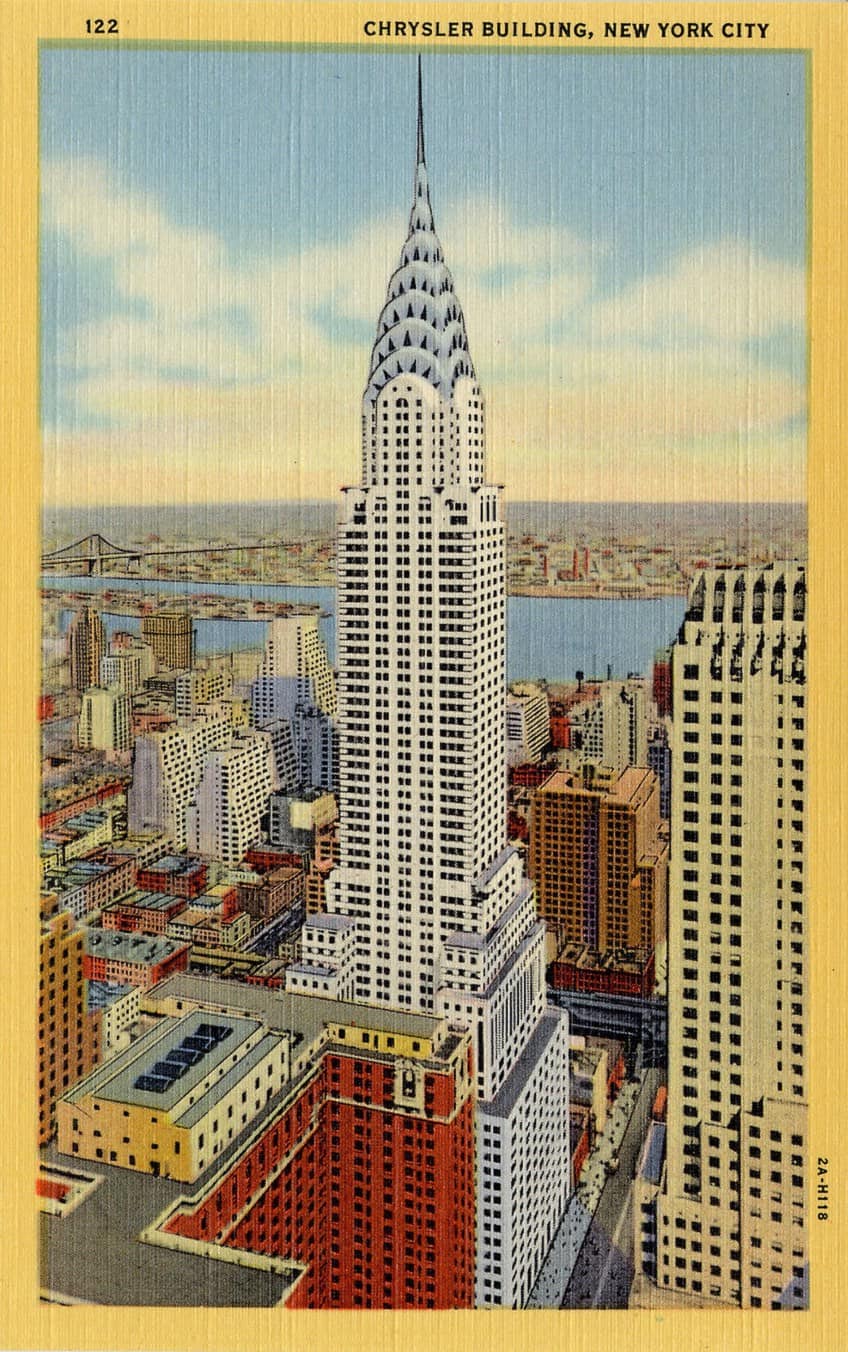
The Chrysler Building was quickly eclipsed in elevation by the Empire State Building, designed by William F. Lamb in a little less opulent Deco style, and the RCA Building, designed by Raymond Hood, which together transformed the skyline of New York City. The structures’ tops were elaborately decorated with Art Deco spires coated in stainless steel Similar, but not nearly as tall, structures quickly arose in Chicago and other major American cities.
The Rockefeller Center now has numerous large buildings clustered around an open plaza with a central fountain.
Art Deco Sculpture
Architecture in the Art Deco style frequently included sculpture. The Théâtre des Champs-Élysées in Paris, France, was the first Art Deco monument to be adorned with allegorical bas-reliefs by Antoine Bourdelle in 1912. Major sculptures were scattered across the grounds of the 1925 Exposition, structures were friezed with sculptures, and other pavilions were committed to smaller studios. A sizable number of well-known sculptors produced pieces throughout the 1930s for the 1937 Exposition Internationale des Arts et Techniques Dans la Vie Moderne in Chaillot. The relief carvings on the Palais de Tokyo’s front were created by Alfred Jannat.
Almost always depicting heroic or allegorical characters relevant to the function of the building or space, public art deco sculpture was figurative.
In most cases, the patrons rather than the artist chose the topics. For ornamentation, abstract sculpture was relatively uncommon. Paul Manship was the most well-known Art Deco sculptor for public art in the United States. He reworked classical and mythical themes and topics in an Art Deco manner. The sculpture of Prometheus at Rockefeller Center is a 20th-century interpretation of a classical figure and is his most well-known creation.
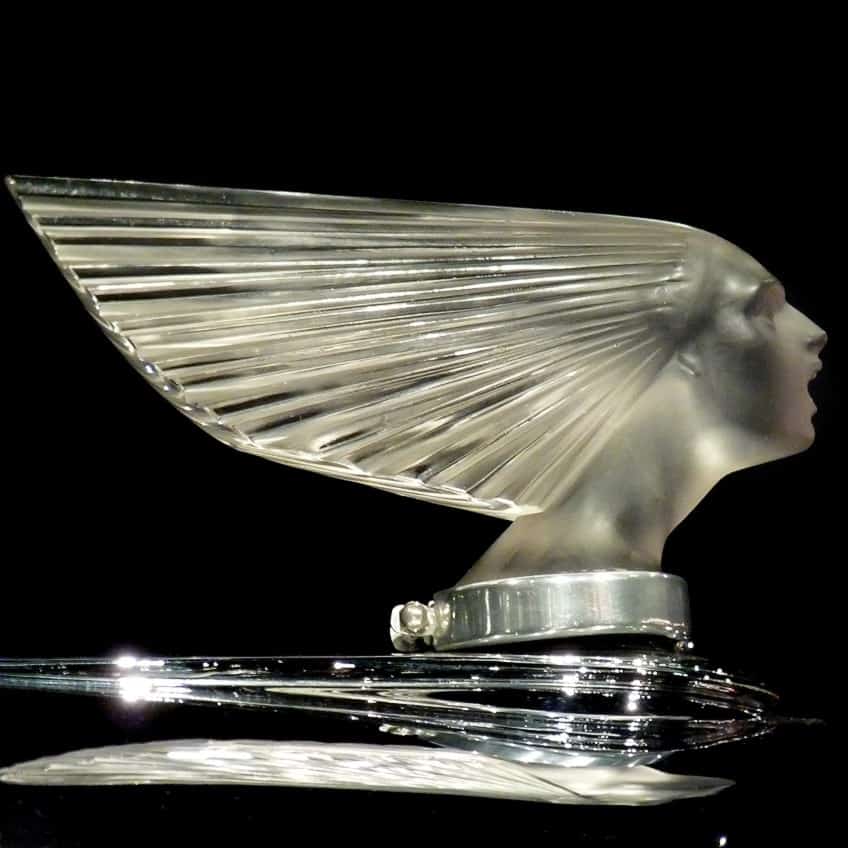
Lee Lawrie also created the sculptured facade of Rockefeller Center as well as the Atlas monument, which are both significant pieces. Many initial Art Deco sculptures were tiny and intended to be used to adorn salons. The Chryselephantine statuette was a kind of sculpture inspired by ancient Greek temple sculptures composed of gold and ivory. They were occasionally crafted of bronze, and other times of considerably more opulent materials like onyx, ivory, alabaster, and gold leaf.
Demétre Chiparus, a Romanian-born sculptor, was a well-known Art Deco salon artist who created colorful tiny sculptures of dancers.
Josef Lorenzl, Ferdinand Preiss, Dorothea Charol, Alexander Kelety, and Gustav Schmidtcassel were among the other renowned salon sculptors. Harriet Whitney Frishmuth, who had trained with Auguste Rodin in Paris, was another notable American artist in the Art Deco studio style. Pierre Le Paguays was a well-known studio sculptor whose Art Deco artworks were displayed at the 1925 Exposition in Paris. He used marble, copper, onyx, ivory, alabaster, gold, and other costly materials in his work.
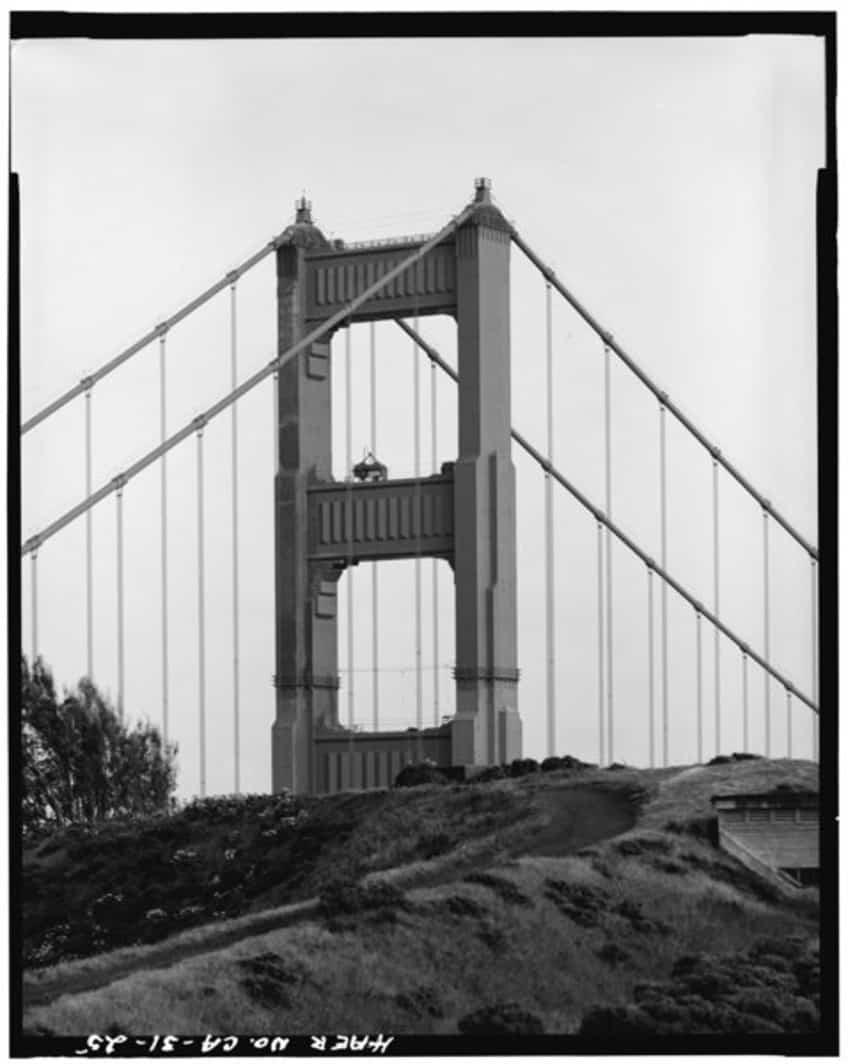
François Pompon was regarded as a modern stylized sculpting pioneer. He was not completely recognized for his creative abilities until the age of 67, when he exhibited The White Bear, at the Salon d’Automne in 1922. More abstract modernist and avant-garde sculptors were producing work in New York City and Paris at the same time as these Art Deco masters.
Art Deco Painting
At the 1925 Exposition, there was no area designated for painting. Because painted Art Deco artworks were, by definition, ornamental, intended to beautify a space or piece of architecture, few artists worked entirely in the style, although two painters are intimately linked with it. Jean Dupas created Art Deco frescoes for the Bordeaux Pavilion in Paris in 1925, as well as the painting over the fireplace in the Maison du Collectionneur show, which included furniture by Ruhlmann and other famous Art Deco designers. His paintings were also significant in the décor of the SS Normandie, a French cruise liner.
His Art Deco artwork was essentially ornamental, intended to serve as a backdrop or complement to other components of the decor.
Tamara de Lempicka is another painter linked with the style. She was born in Poland and moved to Paris during the Russian Revolution. She trained under André Lhote and Maurice Denis and adopted many of their techniques. She produced portraits in an Art Deco style that was realistic, energetic, and colorful.
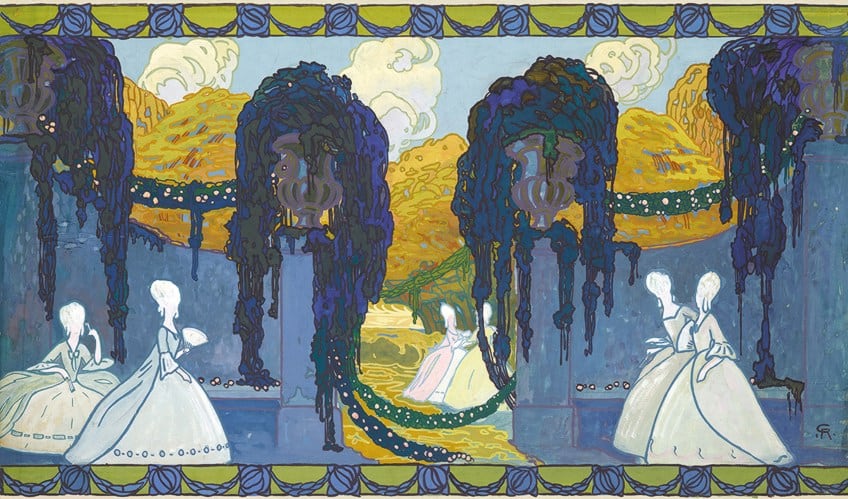
In the 1930s, a striking new style of Art Deco painting emerged in the United States. During the Great Depression, the Works Progress Administration established the Federal Art Project to employ jobless artists. Many people were assigned to decorate government buildings, schools, and hospitals.
The murals were considered Art Deco as they were all decorative and connected to the goings-on in the town or structure where they were painted.
For example, while Diego Rivera decided to paint a vehicle factory for the Detroit Institute of Arts, Rockwell Kent and Reginald Marsh both adorned U.S. postal buildings and featured postal workers at work. The painting Man at the Crossroads by Diego Rivera, created in 1933 for 30 Rockefeller Plaza, included an unofficial depiction of Lenin. The artwork was demolished and a new one was created by the Spanish artist Josep Maria Sert when Rivera refused to erase Lenin.
Art Deco Textiles
Textiles, in the shape of upholstery, colorful wallpaper, and rugs, were an essential aspect of the Art Deco aesthetic. Designers were influenced by the theatrical sets of the Ballets Russes, Léon Bakst’s costumes and fabric designs, and Wiener Werkstätte productions of the 1920s. André Mare’s initial interior designs used vividly colored and very stylized wreaths of flowers that adorned the floors, walls, and furniture. Floral motifs characterized the work of Paul Poiret and Raoul Dufy, as well as J.E. Ruhlmann’s furniture designs. Paul Poiret redesigned the flowery carpet in the Deco style.
The invention of the pochoir stencil-based printing technology, which allowed designers to produce crisp lines and highly bright colors, substantially expanded the usage of the style.
Charles Worth, Paul Poiret, and Jean Patou wore garments with Art Deco shapes. Following World War I, textile and fabric exports were one of France’s most important cash earners. Late Art Deco wallpapers and textiles included complex industrial sceneries, vehicles, cityscapes, and other modern motifs, as well as stylized feminine figures, metal finishes, and geometric patterns.
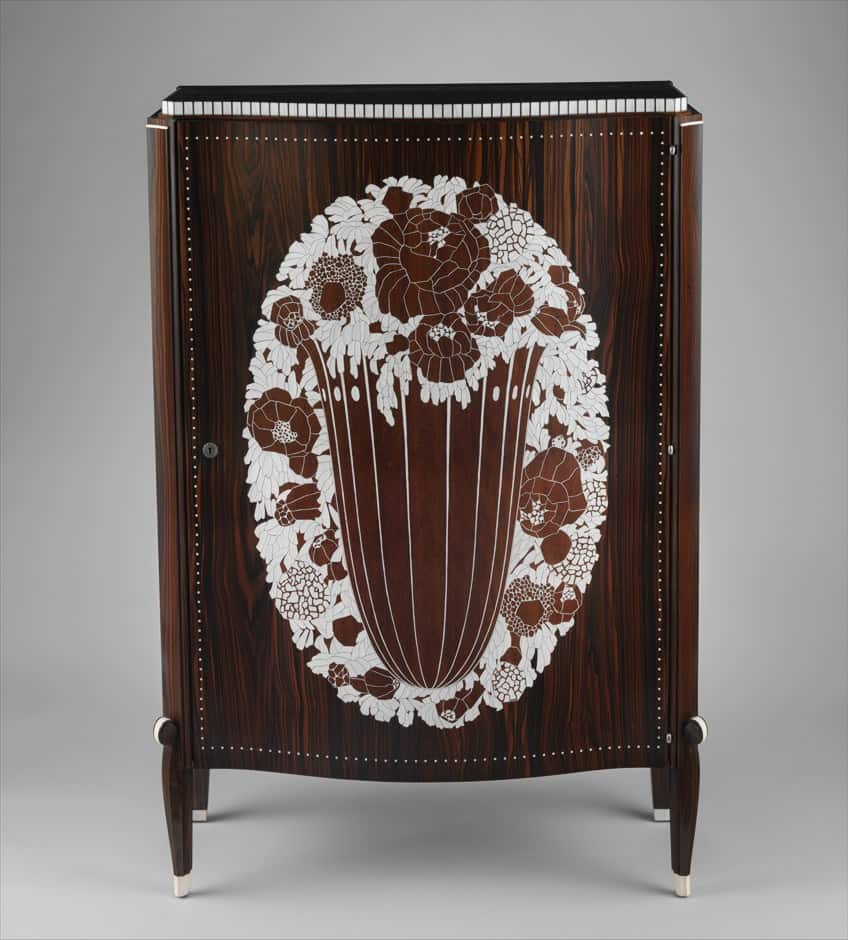
Thanks in large part to designers Paul Poiret and subsequently Coco Chanel, fashion underwent a significant transition during the Art Deco era. Poiret revolutionized fashion design with the notion of draping, a break from traditional tailoring and pattern-making.
He created apparel that was made of rectangular patterns and had straight lines. His designs included clear structural lines.
Fashion became more streamlined and functional as the corseted appearance and formal forms of the preceding era were abandoned, instead using fresh materials, vibrant colors, and printed patterns. The movement was completed by fashion icon Coco Chanel, who made sporty, casual chic fashionable.
Art Deco Jewelry
Designers like Cartier and René Lalique attempted to lessen the historical supremacy of diamonds in the 1920s and 1930s by adding more vibrant gemstones such as tiny rubies, emeralds, and sapphires. They also put more focus on extravagant settings made of less expensive materials like horn, glass, enamel, and ivory. The actual diamonds were cut in less conventional ways; during the 1925 Exposition, several diamonds were shaped like small rods or matchsticks.
The settings for diamonds also underwent a transformation; platinum, which was robust and flexible and could be used to set clusters of stones, was increasingly adopted by jewelers in place of gold.
Additionally, jewelers started utilizing darker materials like black onyx and enamels, which enhanced the contrast between diamonds. Jewelry grew increasingly brighter and more diversified in style. Cartier and Boucheron created pins, earrings, fasteners, rings, and pendants by combining diamonds with colorful other jewels cut into the shape of foliage, fruit, or florals.
Far Eastern motifs became fashionable as well; coral and jade plaques were coupled with diamonds and platinum, and cigarette cases, vanity cases, and powder boxes were embellished with enamel, mother of pearl, and lacquer landscapes. Rapidly shifting patterns in clothes resulted in new jewelry types. Sleeveless dresses in the 1920s required arm decoration, so designers quickly devised bracelets of silver, gold, and platinum encrusted with onyx, lapis-lazuli, coral, and other colorful stones; other jewelry was designed for the upper arms, as well as several bracelets were frequently worn at the same time.
Women’s short hairstyles in the 1920s demanded complex Art Deco earring designs. Designers made exceedingly elegant cigarette boxes and ivory cigarette holders when ladies started smoking in public.
Before World War I, the development of the wristwatch encouraged jewelers to build amazing ornamented timepieces studded with diamonds and coated with enamel, gold, and silver. Pendant timepieces suspended from a ribbon were popular as well.
Art Deco Glass Artworks
Art Deco, like Art Nouveau before it, was an outstanding time for beautiful glass and other decorative products created to complement their architectural environments. René Lalique was the most famous glass item maker, and his creations, from vases to vehicle hood decorations, became emblems of the time. He dabbled in glassware before World War I, producing bottles for François Coty’s fragrances, but he did not start the major manufacture of artistic glass until after the war.
At the age of 58, he purchased a big glass studio in Combs-la-Ville and began producing both artistic and functional glass things.
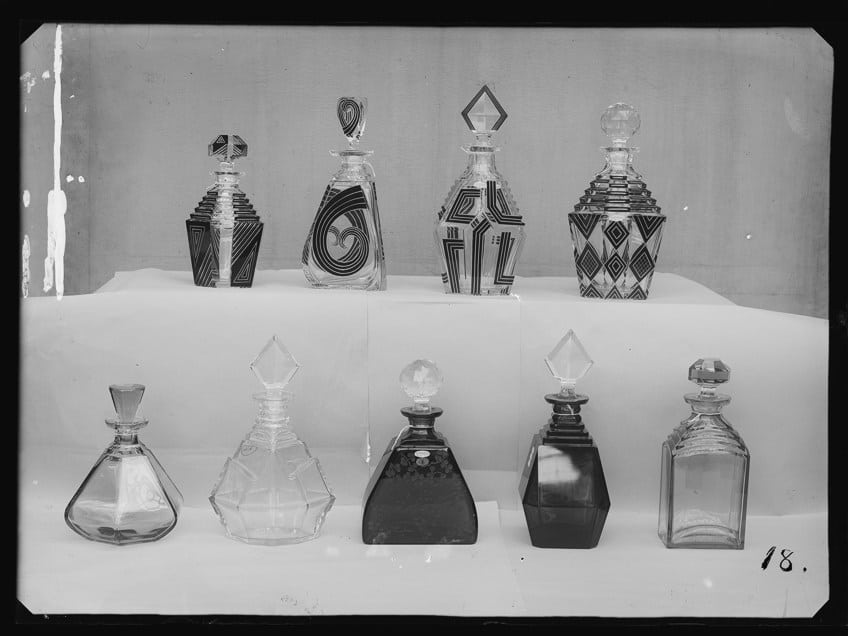
He used glass as a medium for sculpting and creating vases, statuettes, bowls, lamps, and decorations. He chose demi-crystal over lead crystal because it was softer and simpler to create, albeit not as glossy. He occasionally used colored glass, but he preferred opalescent glass, which had half or all of its exterior surface stained with a wash.
Lalique designed the beautiful panes, lighting, and lit glass ceilings for the cruise liners SS Normandie and SS Île de France, as well as several of the French railroads’ first-class sleeper carriages.
Art Deco Motifs and Decorations
The Art Deco era saw numerous unique eras of decoration. Design trends experienced a return to tradition between 1910 and 1920, notably in the work of Paul Iribe, as Art Nouveau was worn out. André Vera argued in a 1912 essay published in the journal L’Art Décoratif for the use of new shapes inspired by nature, notably garlands and baskets of flowers and fruits, as well as a return to earlier ages’ skill and materials.
The vivid hues of the Fauves aesthetic movement and the vibrant sets and costumes of the Ballets Russes served as the inspiration for a second Art Deco trend, which was popular from 1910 to 1920.
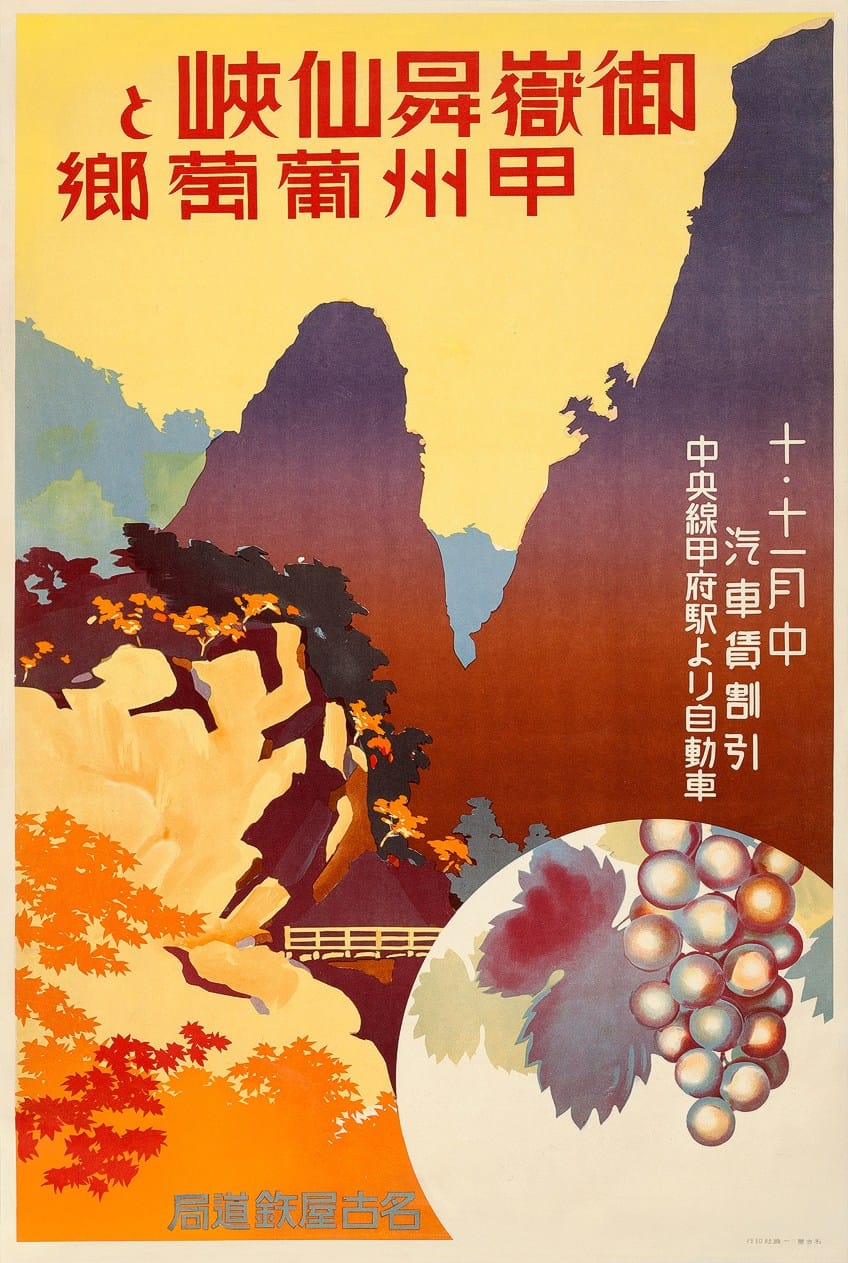
The ornamental style shifted in the late 1920s and early 1930s as a result of the development of new materials and technology. It grew more ornamental-free and sleeker. Similar to Art Deco architecture, furniture started to adopt rounded corners and a glossy, streamlined appearance. Furniture and decor started to use new materials including nickel- or chrome-plated steel, aluminum, and bakelite, an early plastic.
The themes of the decor represented the purpose of the building throughout the Art Deco period, notably in the 1930s.
The sculptures in theatres depicted dance, music, and exuberance; power companies depicted sunrises, and the Chrysler Building depicted stylized hood ornaments, and the friezes of the Palais de la Porte Dorée at the 1931 Paris Colonial Exposition depicted the faces of the various nationalities of French colonies. The Streamline design makes the skyscraper appear to be in motion. In place of traditional heroes, the WPA murals of the 1930s showed regular people such as factory employees, postal workers, households, and farmers.
Art Deco Accomplishments and Ideas
Art Deco, like Art Nouveau, is a contemporary art style that aims to incorporate beautiful elements into useful things. This approach differs from the fine arts (sculpture and painting), where the art piece has no practical use other than to be aesthetically pleasing. With the onset of mass production, artists and designers aspired to improve the aesthetic of mass-produced useful goods ranging from timepieces and ashtrays to automobiles and Art Deco buildings.
Art Deco’s quest for beauty in all parts of life was directly indicative of the relative newness and widespread use of machine-age technology to make many products rather than conventional crafting methods.

The Bauhaus school was similarly concerned with industrial output, but it was the polar opposite in that it avoided aesthetic ornamentation in favor of clean and plain geometric shapes. The Art Deco ethos differed from the Arts and Crafts and Art Nouveau styles, which stressed the individuality and distinctiveness of handmade goods and included stylized, organic shapes.
That artisanal quality was symptomatic of elitism in contrast to Art Deco’s more egalitarian goal: to create visually beautiful, machine-made things that were accessible to all.
The American interpretation of the Art Deco style, Streamline Moderne, was a simplified and elegant take on the more ornate and frequently customized European Art Deco style. In many aspects, the American style developed and flourished, being far more popular and widely used in the U.S. than it was in Europe.
Influences of the Art Deco Style
Art Deco was a mix of several, perhaps incongruous styles rather than a singular aesthetic. In contrast to the sinuous Art Nouveau style of Hector Guimard, which had gained so much popularity in Paris a few years earlier, Eugène Grasset published and wrote his thoughts in 1905 in which he methodically investigated the decorative aspects of geometric elements, motifs, forms, and their variations. Grasset emphasized the idea that all compositional arrangements are built upon a variety of basic geometric forms, such as squares and triangles.
Henri Sauvage and Auguste Perret’s reinforced concrete structures, especially the Théâtre des Champs-Élysées, introduced a brand-new style of Art Deco building and decor that was imitated all over the world.
Art Deco incorporated a variety of various styles in its ornamentation. The Musée de l’Homme, the Louvre, and the Musée National des Arts d’Afrique et d’Océanie all housed pre-modern artwork from various parts of the world. Due to the excavations at Troy, Pompeii, and the tomb of Tutankhamun, there was also a general interest in archaeology.
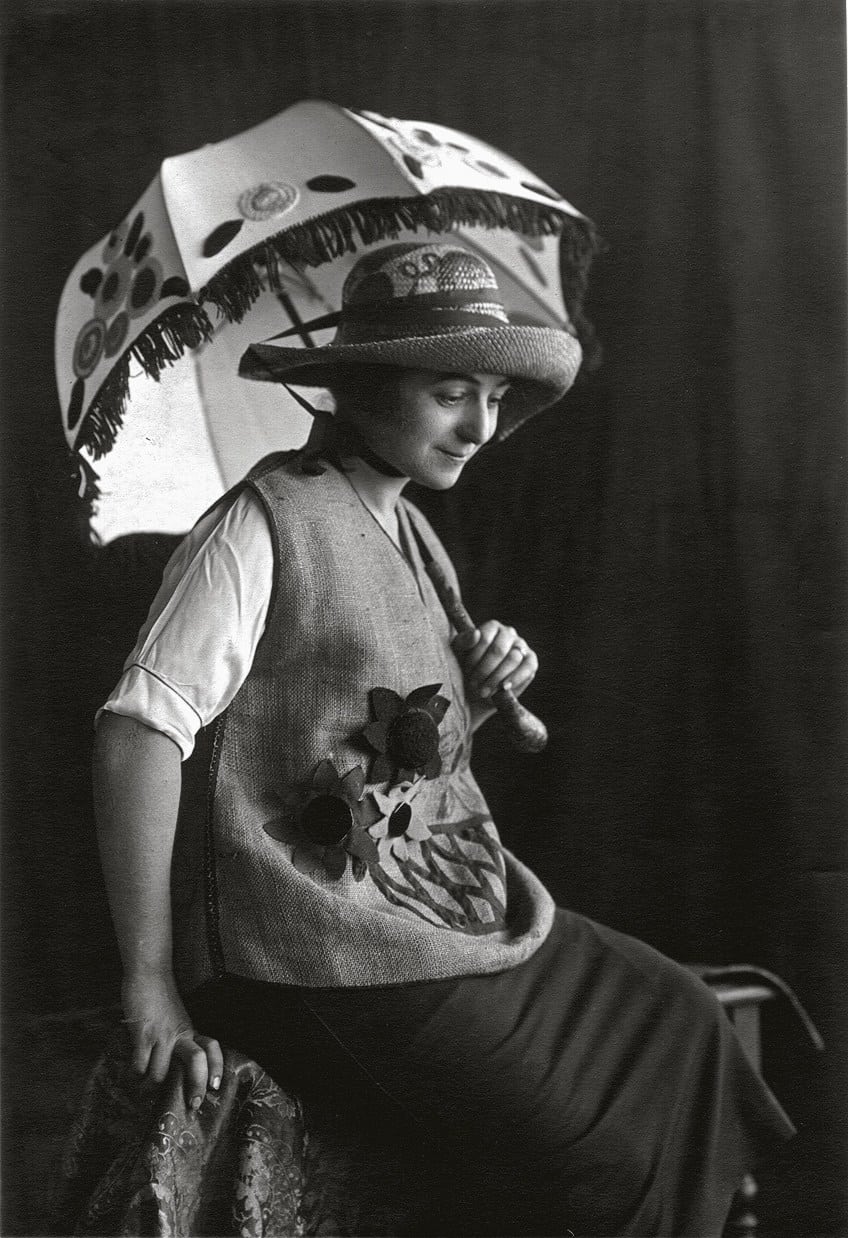
Ancient African, Greek, Roman, Mesopotamian, Asian, Mesoamerican, and Oceanian themes were combined with Machine Age components by designers and artists. Other styles that were appropriated were Functionalism, Orphism, and Modernism in general, as well as Italian Futurism and Russian Constructivism.
Art Deco also drew inspiration from the clashing hues and patterns of Fauvism, particularly in the works of André Derain and Henri Matisse, for its wallpaper, textile, and painted ceramic designs.
It borrowed design cues from the era’s high fashion lexicon, which incorporated geometric patterns, zigzags, chevrons, and stylized floral arrangements. Egyptological findings and the rise in popularity of African and Asian art both affected it. It was frequently motivated by a love of cutting-edge technology starting in 1925, including automobiles, airships, and ocean liners, and by 1930, this influence gave rise to Streamline Moderne.
The Opulence of the Art Deco Era
Art Deco blended highly costly materials and superb craftsmanship applied to modernistic designs; it was linked with both opulence and modernity. Inlays of silver and ivory were used in Art Deco furniture, while diamonds were blended with jade, platinum, coral, and other valuable materials in Art Deco jewelry. The first-class lounges of ocean liners, plush trains, and skyscrapers were all decorated in this fashion.
In the late 1920s and early 1930s, it was utilized all over the world to adorn grand cinema theatres. The fashion altered and grew more somber later, following the Great Depression.
The Jeanne Lanvin boudoir, created by Armand-Albert Rateau, is an excellent illustration of the opulent Art Deco decor. It was at her Paris residence at 16 Rue Barbet de Jouy, which was destroyed in 1965. The chamber was rebuilt in Paris’s Museum of Decorative Arts. Molded Lambris is placed on top of stucco bas-relief sculptures to cover the walls. A pedestal made of carved wood surrounds the alcove and is surrounded by marble columns on bases. White and black marble makes up the floor, while ornamental items are placed in the cabinets against a blue silk backdrop.
Her restroom had a sienna marble tub and washstand in addition to a stucco wall with carvings and bronze fixtures. Deep leather club chairs had been added to the design by 1928, making it comfier. The study, created in 1930 for an American businessman by the Parisian company Alavoine, is currently on display at the Brooklyn Museum. Although the style had been slightly streamlined by the 1930s, it was still ostentatious. Decorator Paul Ruaud created the Glass Salon in 1932 for Suzanne Talbot. It included two cylindrical armchairs and a sinuous armchair by Eileen Gray, an abstract pattern panel in black and silver lacquer, and various animal skins.
What is Art Deco? Based on the Art Deco definition and history, It became well-known after the famous exposition, which took place in Paris in 1925 and gave rise to its name. By the late 1930s, it had reached its streamlined stage, and after WWII, the International Style, stripped of any adornment, was supreme. It wasn’t until the late 1960s that people started to rediscover and take it more seriously. Art Deco embodied the vitality and brightness of the booming 1920s as well as the optimism and escapism of the bleak 1930s.
Frequently Asked Questions
What Is the Difference Between Art Deco and Art Nouveau?
Art Deco and Art Nouveau are two of the most influential art trends of the 20th century, affecting many aspects of visual culture. Whereas Art Nouveau is defined by delicate curves and lengthy lines, Art Deco is defined by sharp angles and geometrical forms. Although they are sometimes mistaken, the two movements represent fundamentally separate trajectories in the evolution of contemporary art.
What Defined the Art Deco Era?
According to the Art Deco definition, Art Deco prints, like Futurism, include sharp angles, powerful geometric forms, and bright colors. The iconic futuristic lines in the form of parallel lines, repeated geometrical patterns, and narrower forms were utilized by Art Deco designers to represent the concepts of streamlining, balance, and speed. The Bauhaus, Art Nouveau, and Cubism movements were all influential on Art Deco.
Jordan Anthony is a Cape Town-based film photographer, curator, and arts writer. She holds a Bachelor of Art in Fine Arts from the University of the Witwatersrand, Johannesburg, where she explored themes like healing, identity, dreams, and intuitive creation in her Contemporary art practice. Jordan has collaborated with various local art institutions, including the KZNSA Gallery in Durban, the Turbine Art Fair, and the Wits Art Museum. Her photography focuses on abstract color manipulations, portraiture, candid shots, and urban landscapes. She’s intrigued by philosophy, memory, and esotericism, drawing inspiration from Surrealism, Fluxus, and ancient civilizations, as well as childhood influences and found objects. Jordan is working for artfilemagazine since 2022 and writes blog posts about art history and photography.
Learn more about Jordan Anthony and about us.
Cite this Article
Jordan, Anthony, “Art Deco – An In-Depth Discussion of the Art Deco Period.” artfilemagazine – Your Online Art Source. December 6, 2022. URL: https://artfilemagazine.com/art-deco/
Anthony, J. (2022, 6 December). Art Deco – An In-Depth Discussion of the Art Deco Period. artfilemagazine – Your Online Art Source. https://artfilemagazine.com/art-deco/
Anthony, Jordan. “Art Deco – An In-Depth Discussion of the Art Deco Period.” artfilemagazine – Your Online Art Source, December 6, 2022. https://artfilemagazine.com/art-deco/.


